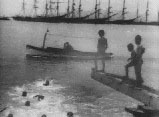Douglas County Museum of Natural & Cultural History [OR]
Douglas County traverses an amazing variety of terrain, from the snowcapped peaks of the Cascade mountains to the Pacific Ocean. The Douglas County Museum of Natural & Cultural History chronicles human history in Douglas County, from the Umpqua tribe which first settled the area 10,000 years ago until the present day, and also pays special attention to the history of mining, fishing, farming, and logging, all of which have been an integral part of the Douglas County economy.
The museum offers exhibits, guided tours, outreach programs, and special events such as presentations and lectures. The website offers visitor information, a history of the museum, information regarding museum programs, and an events calendar.



